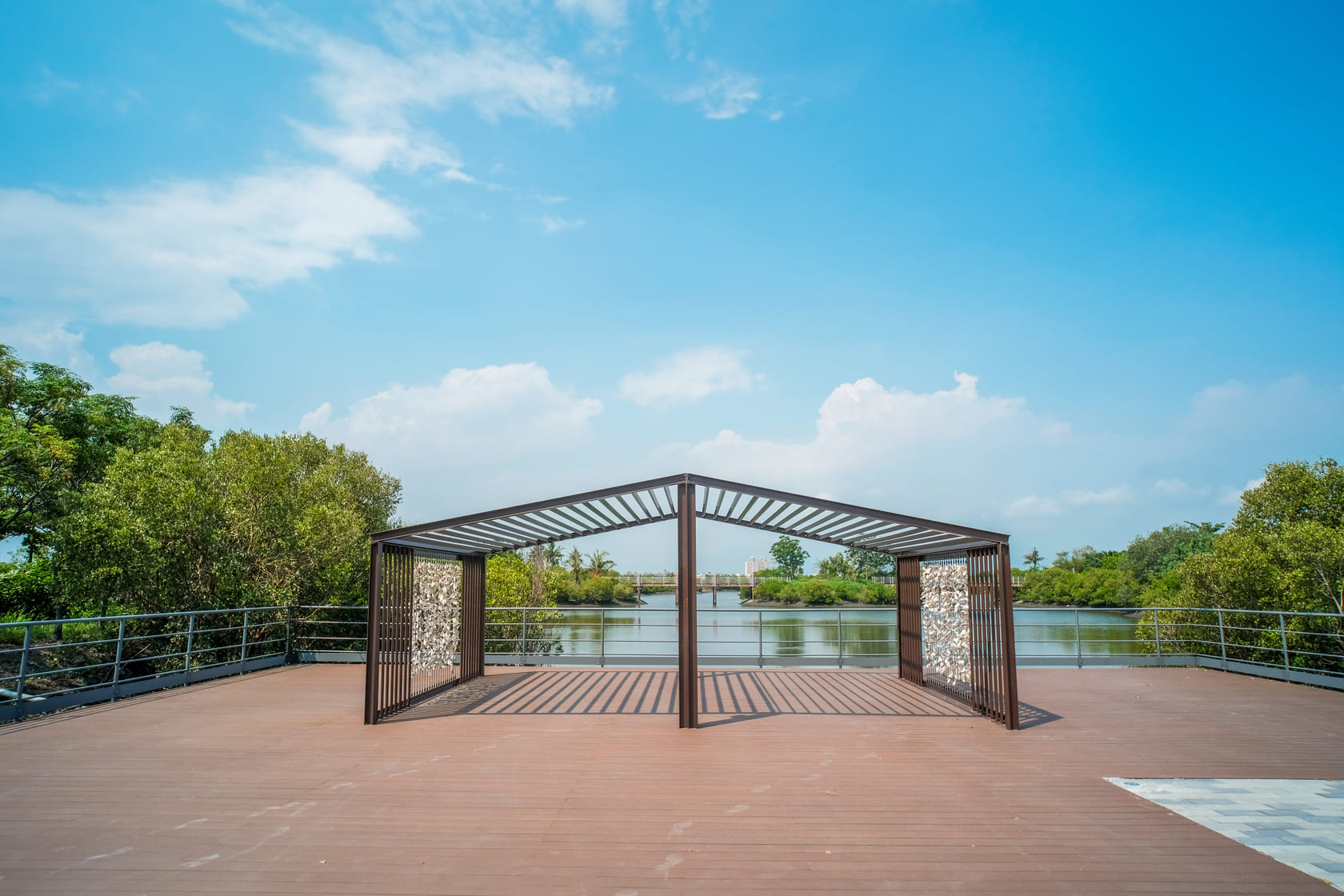Mangrove Wetland Park Introduction
The Mangrove Wetland Ecological Park is located west of Dapeng Bay, covering an area of approximately 13.5 hectares, mainly used for mangrove restoration. It is adjacent to community family wastewater and aquaculture wastewater, which flows in naturally through gravity, allowing the mangrove plants within the wetland to absorb and utilize it, thus achieving purification effects. Due to its rich mangrove ecosystem, it also creates ecological tourism value. The distribution of mangrove forests in the Dapeng Bay area is primarily concentrated in the following regions: Jianmei Township: After exploring the mangroves of the first drainage ditch in Donggang, you can find mangrove thickets adorned with coconut trees next to the Jianmei Township community. In this lush green scenery, you can carefully search for schools of mudskippers playing and foraging on the mudflats. First Drainage Ditch: Continuing south along Taiwan Route 17, you will reach the location of the first drainage ditch, which is also a growing area for mangroves. Here, besides observing the mangrove ecosystem, another recommended subject to observe is the "Fiddler Crab." Throughout the mudflats, you can see numerous small mounds, which are the underground castles created by these diligent creatures, making the mudflats a place full of ecological surprises. Lianbian Drainage Ditch: Further south along the first drainage ditch, you can arrive at the mangrove distribution area of the Lianbian Drainage Ditch, which attracts large numbers of waterbirds, making it a paradise for birdwatching enthusiasts. Bird Species: The bird species present in the Dapeng Bay National Scenic Area include migratory and stopover birds, primarily from families that prefer activities in muddy wetland areas, such as herons, sandpipers, and rails. The most numerous are the heron species, particularly the Little Egret, followed by the Cattle Egret, Great Egret, Grey Heron, and Yellow Bittern. Among the sandpiper families, the most commonly seen are the Calidris species like the Pintail Snipe, and from the rail families, the Purple Swamphen is also quite abundant. Marine Species: Currently, in Dapeng Bay, the species of fiddler crabs found include the Decorator Fiddler Crab, White Hand Fiddler Crab, Northern Mudflat Fiddler Crab, and Triangle Fiddler Crab. Male fiddler crabs have one noticeably large claw, which can be up to three times the length of their body shell. The color of the fiddler crab changes with time and tidal shifts, with darker colors during the day and lighter colors at night. Fiddler crabs cannot adapt to excessively dry environments and are commonly found in the intertidal zones of Dapeng Bay, around the mangroves, and on the shores. Plant Species: Mangroves are a group of trees or shrubs that grow along coastlines or at river estuaries, mainly distributed in tropical and subtropical regions. These plants typically serve multiple functions such as salt tolerance, wind protection, sand stabilization, flow attenuation, wave reduction, water purification, coastal protection, providing wildlife habitats, and enhancing environmental beauty. This area marks the southern limit of mangrove distribution in Taiwan, with the only remaining species being the Sea Rhizophora. The distribution is primarily concentrated in the Donggang first drainage ditch, Jianmei Township area, and along portions of Dapeng Bay's coastline.
 Mangrove Wetland Trail
Mangrove Wetland Trail
 Mangrove Wetland Overlook
Mangrove Wetland Overlook


































